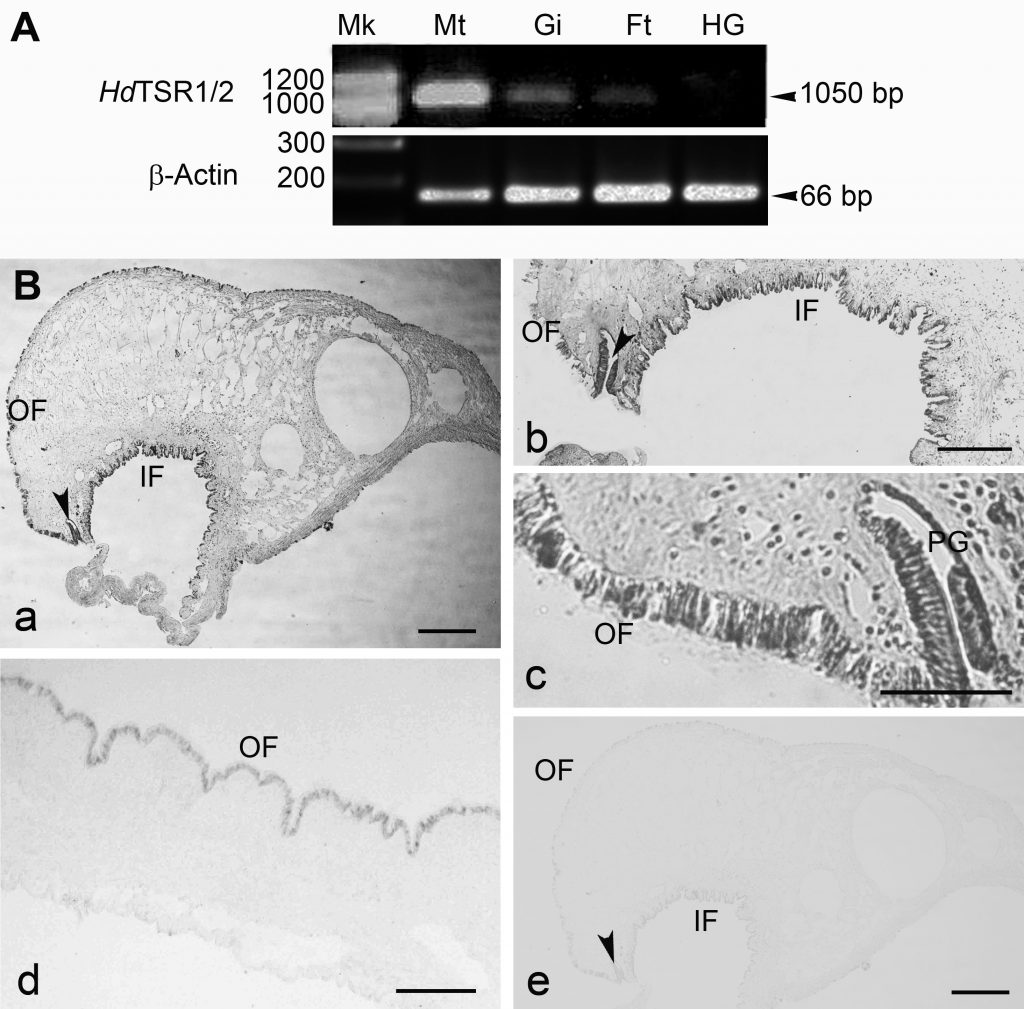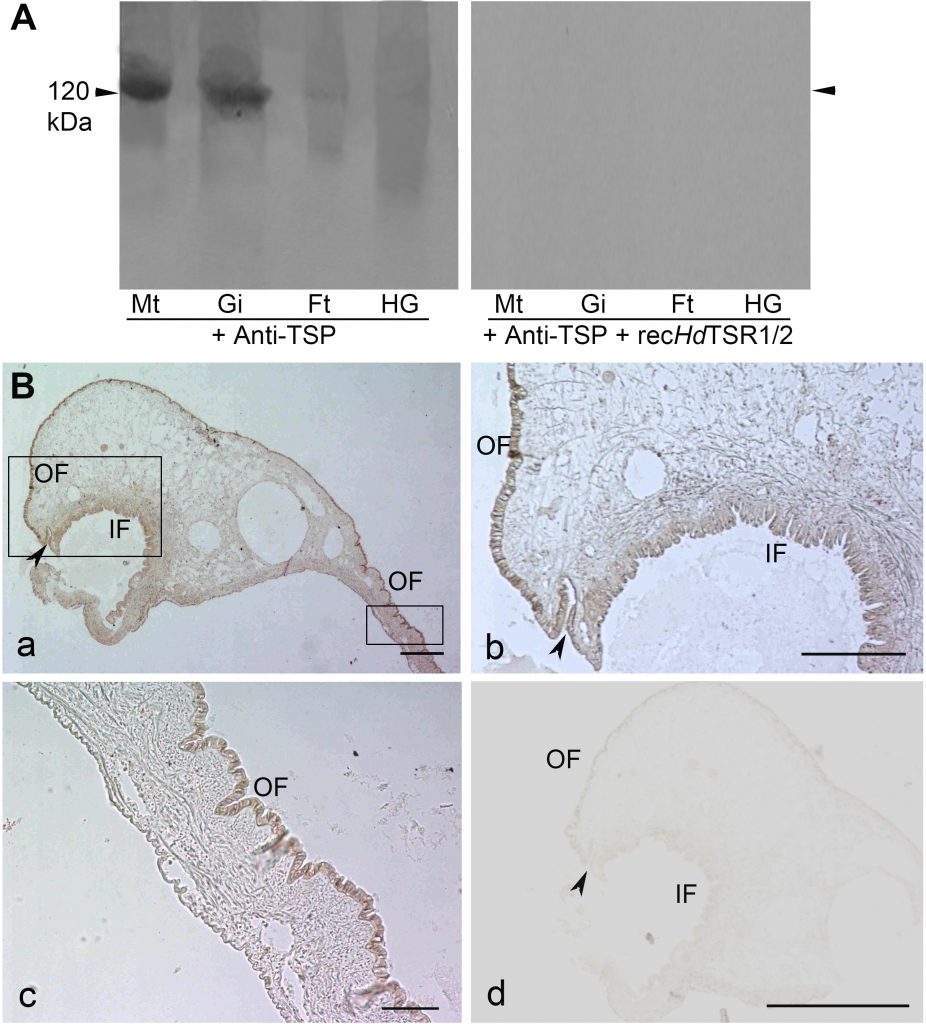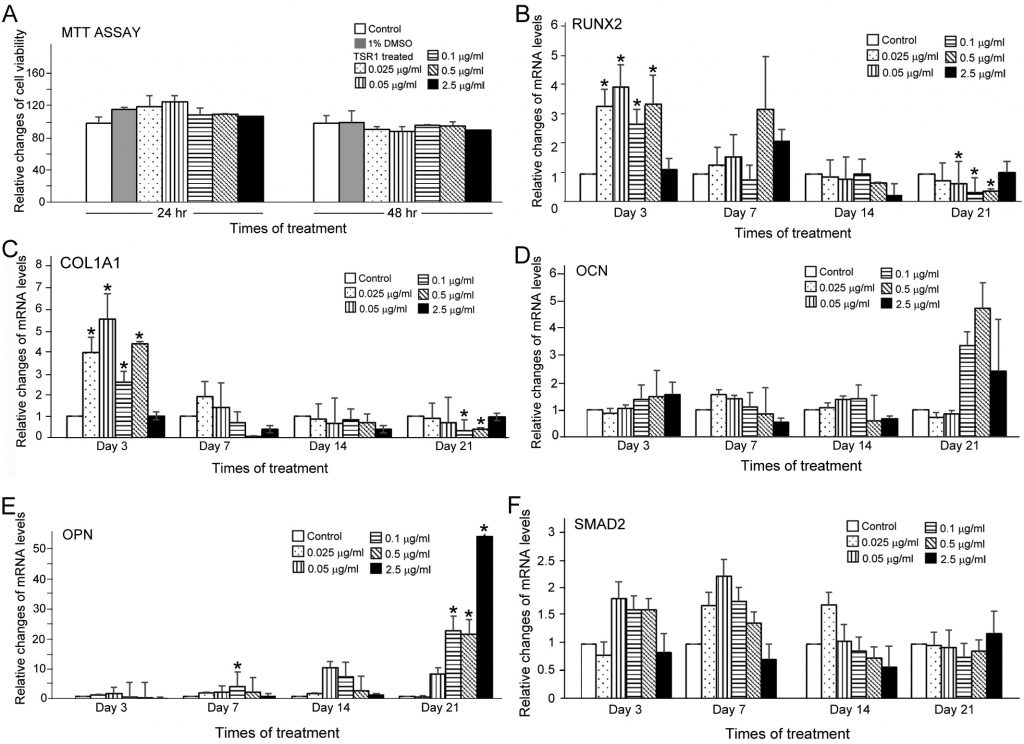



การศึกษาคุณลักษณะของธรอมโบสปอนดิน ชนิดที่ 1 ซ้ำ (Thrombospondin Type 1 Repeat) ในหอยเป๋าฮื้อ ที่มีบทบาทในการเหนี่ยวนำการสร้างกระดูก
Highlight:
โปรตีนสังเคราะห์ธรอมโบสปอนดินที่ได้จากเนื้อเยื่อแมนเทิลของหอยเป๋าฮื้อที่สามารถจับกับ TGF-beta สามารถเหนี่ยวนำการแสดงออกของยีนที่เกี่ยวข้องกับการสร้างกระดูกได้ จึงความเป็นไปได้ที่จะพัฒนาเป็นสารเร่งการซ่อมแซมกระดูกได้
ที่มาและความสำคัญ
จากการศึกษา Transcriptome ที่ได้จาก mantle tissue ของหอยเป๋าฮื้อ พบธรอมโบสปอนดิน (trobospondin) เป็นยีนที่ปรากฎเป็นส่วนหนึ่งของยีน ADAMTS3 ที่จะถูกเปลี่ยนเป็นโปรตีนที่อยู่ที่เยื่อหุ้มเซลล์ และอยู่นอกเซลล์ มีคุณสมบัติจับตัวกับ TGF-beta สามารถกระตุ้นการสร้างเปลือกหอยเป๋าฮื้อได้ จึงเกิดข้อสมมุติฐานว่าโปรตีนธรอมโบสปอนดินสามารถเหนี่ยวนำการสร้างกระดูกได้
Abstract
Thrombospondin repeats (TSR) are important peptide domains present in the sequences of many extracellular and transmembrane proteins with which a variety of ligands interact. In this study, we characterized HdTSR domains in the ADAMTS3 protein of Thai abalone, Haliotis diversicolor, based on the transcriptomic analysis of its mantle tissues. PCR amplification and localization studies demonstrated the existence of HdTSR transcript and protein in H. diversicolor tissues, particularly in both the inner and outer mantle epithelial folds. We, therefore, generated a short recombinant protein, termed HdTSR1/2, based on the existence of the WxxWxxW or WxxxxW motif (which binds to TGF-β, a known signaling in bone formation/repair) in HdTSR1 and HdTSR2 sequences and used it to test the osteoinduction function in the pre-osteoblastic cell line, MC3T3-E1. This recombinant protein demonstrated the ability to induce the differentiation of MC3T3-E1 cells by the concentration- and time-dependent upregulation of many known osteogenic markers, including RUNX2, COL1A1, OCN, and OPN. We also demonstrated the upregulation of the SMAD2 gene after cell treatment with HdTSR1/2 protein indicating its possible interaction through TGF-β, which thus activates its downstream signaling cascade and triggers the biomineralization process in the differentiated osteoblastic cells. Together, HdTSR domains existed in an extracellular ADAMTS3 protein in the mantle epithelium of H. diversicolor and played a role in osteoinduction as similar to the other nacreous proteins, opening up its possibility to be developed as an inducing agent of bone repair.
KEYWORDS: Thrombospondin Type 1 Repeat, Osteoinduction, Biomineralization, Abalone, Nacreous Proteins
Citation: Habuddha, V., Suwannasing, ., Buddawong, A. et al. Characterization of Thrombospondin Type 1 Repeat in Haliotis diversicolor and Its Possible Role in Osteoinduction. Mar Biotechnol 23, 641–652 (2021).
https://doi.org/10.1007/s10126-021-10054-3
RELATED SDGs:
SDG Goal หลัก ที่เกี่ยวข้อง
3. GOOD HEALTH AND WELL-BEING

ผู้ให้ข้อมูล: รองศาสตราจารย์ ดร.สมลักษณ์ อสุวพงษ์พัฒนา
ชื่ออาจารย์ที่ทำวิจัย: รองศาสตราจารย์ ดร.วัฒนา วีรชาติยานุกูล, รองศาสตราจารย์ ดร.สมลักษณ์ อสุวพงษ์พัฒนา
ชื่อนักศึกษาที่ทำวิจัย: Valainipha Habuddha, Chanyatip Suwannasing, Aticha Buddawong, Chanyarak Sombutkayasith
แหล่งทุนวิจัย: Mahidol University
ภาพถ่าย: รองศาสตราจารย์ ดร.วัฒนา วีรชาติยานุกูล, รองศาสตราจารย์ ดร.สมลักษณ์ อสุวพงษ์พัฒนา
Tags: Abalone, Biomineralization, Nacreous Proteins, Osteoinduction, Thrombospondin Type 1 Repeat
